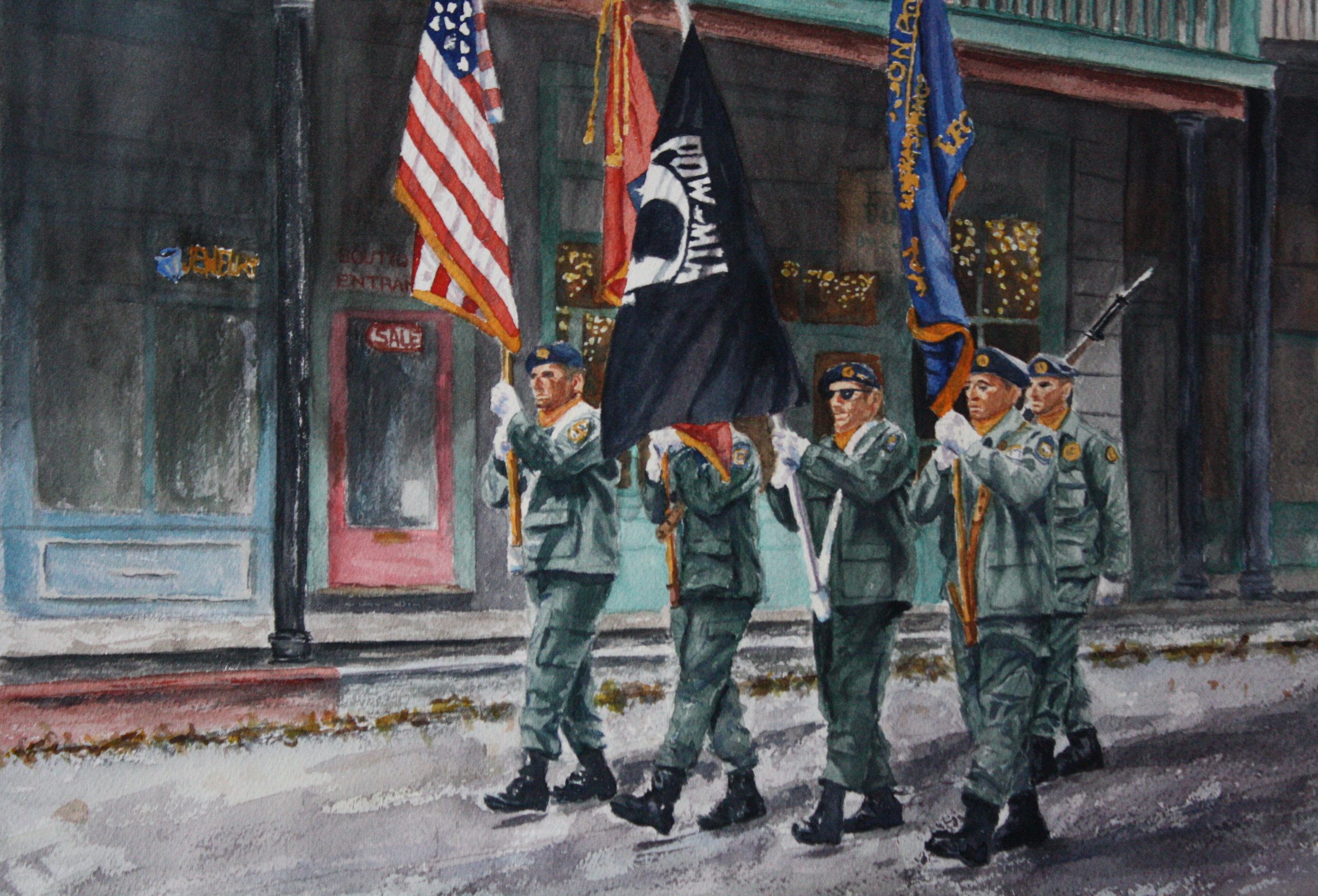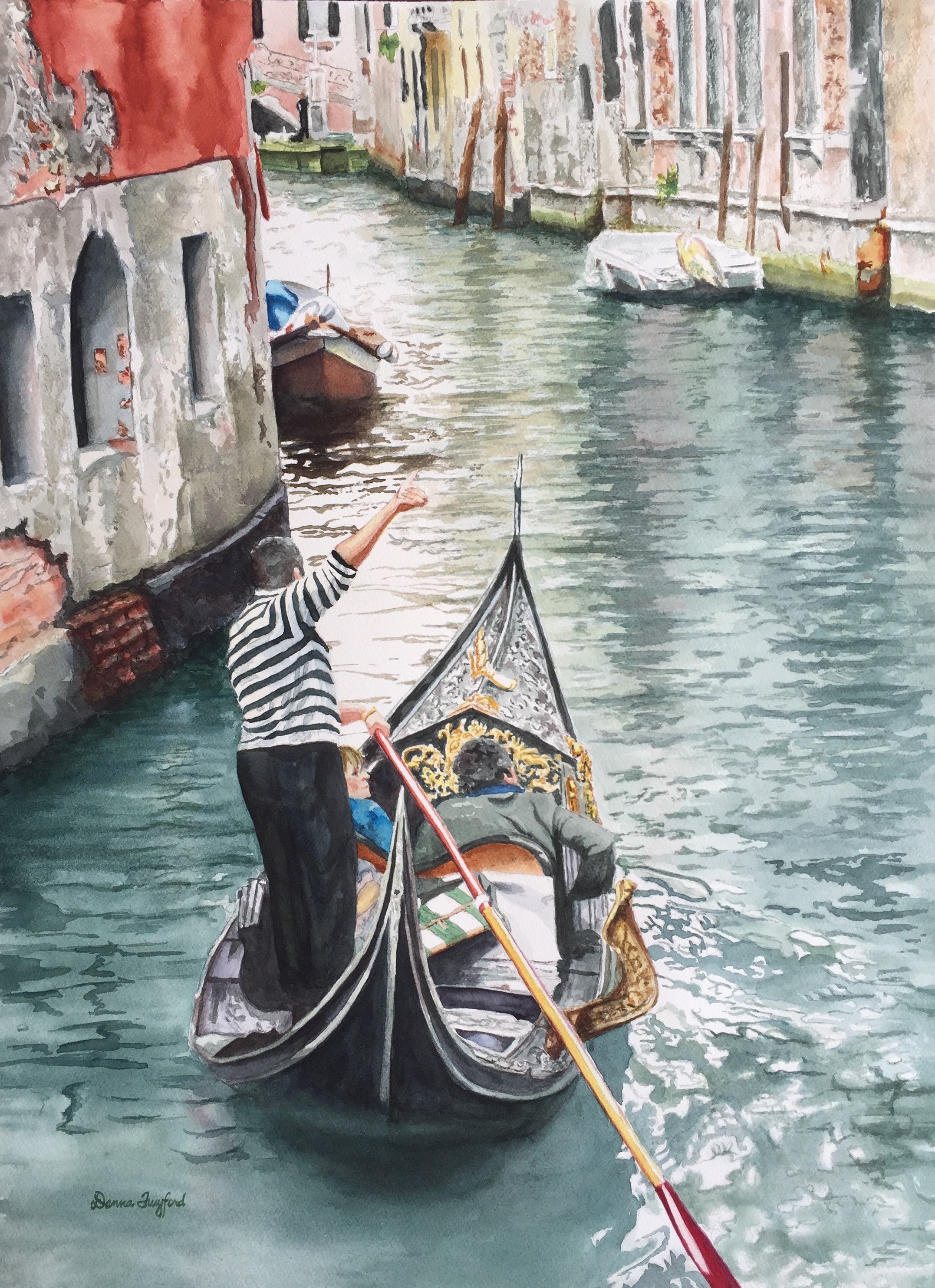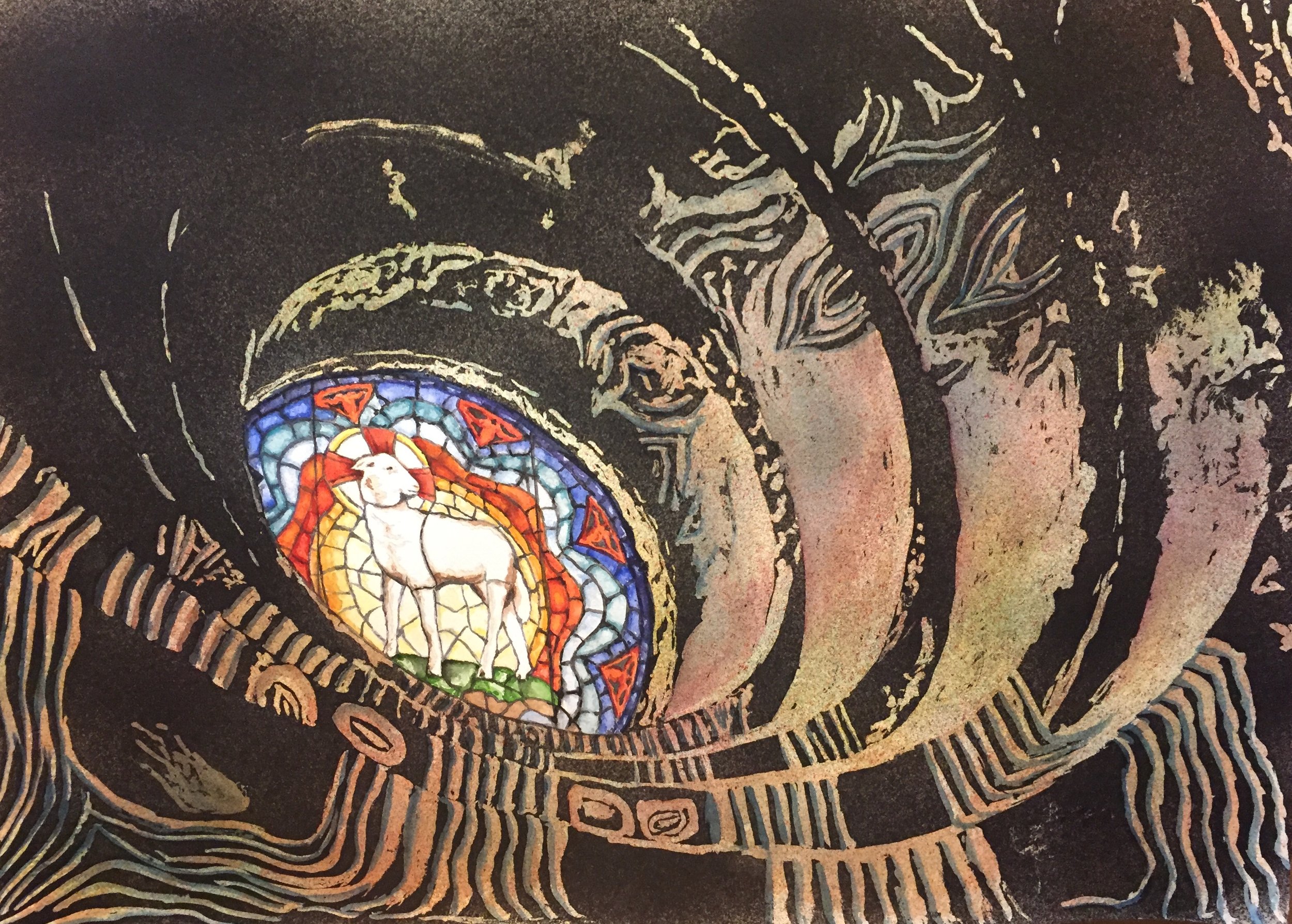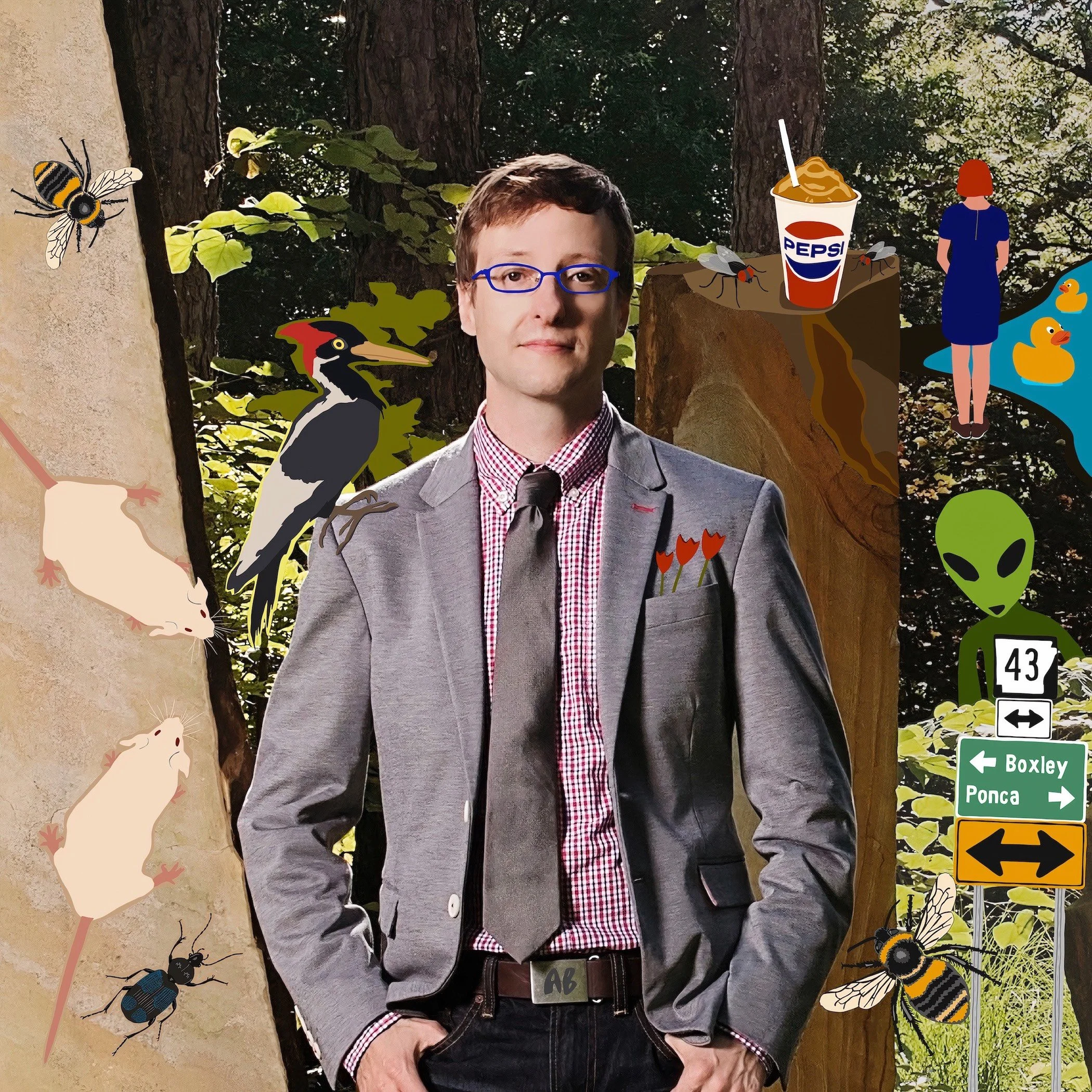Interview with artist Donna Twyford
Donna Twyford has lived all of her life in Arkansas. She is an accomplished watercolorist despite having taken up the medium a relatively short time ago. Her paintings are charming and vibrant and cover a wide range of subjects, many from her travels. More of Donna’s work can be viewed at Art Group Gallery in Little Rock and at her Instagram.
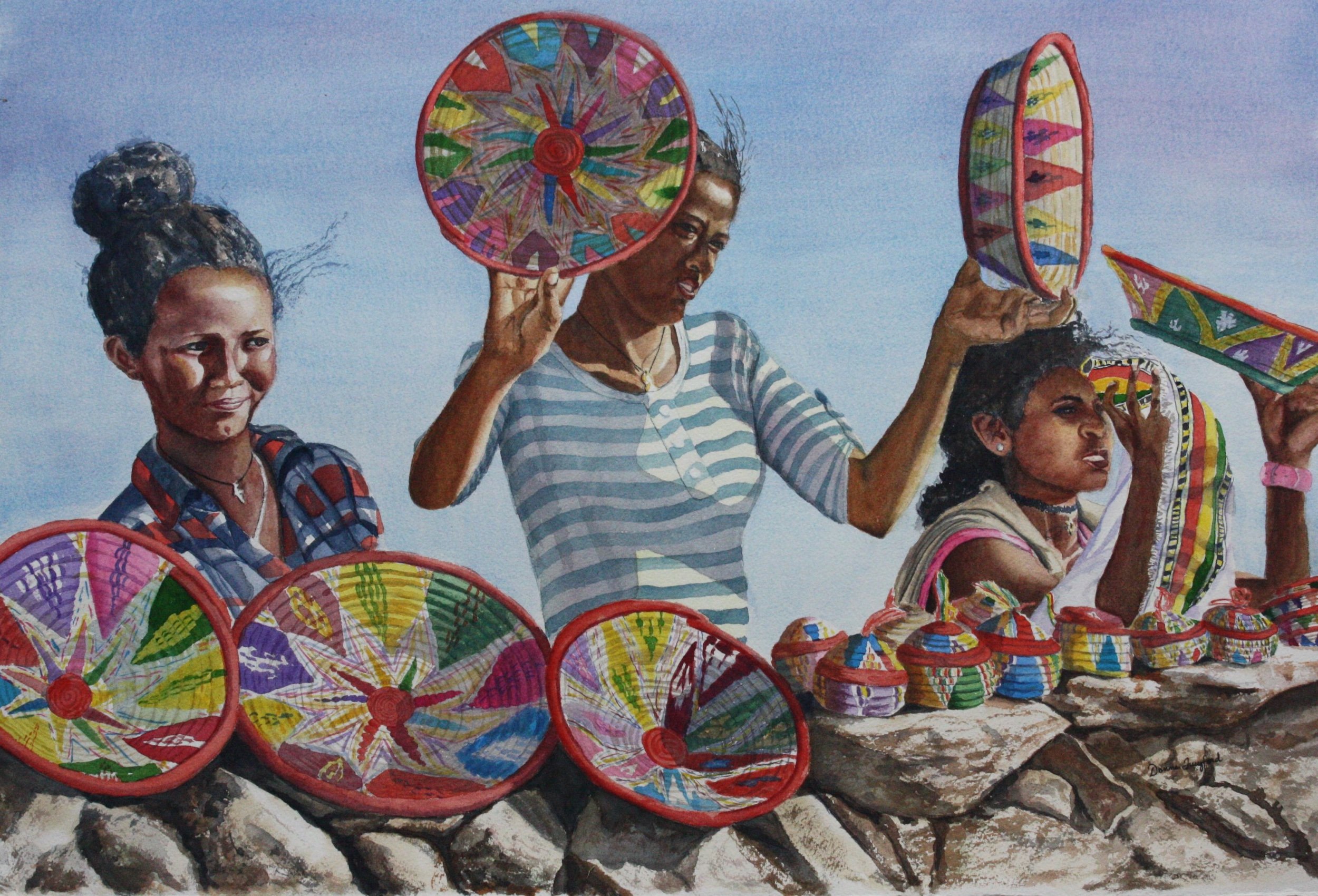
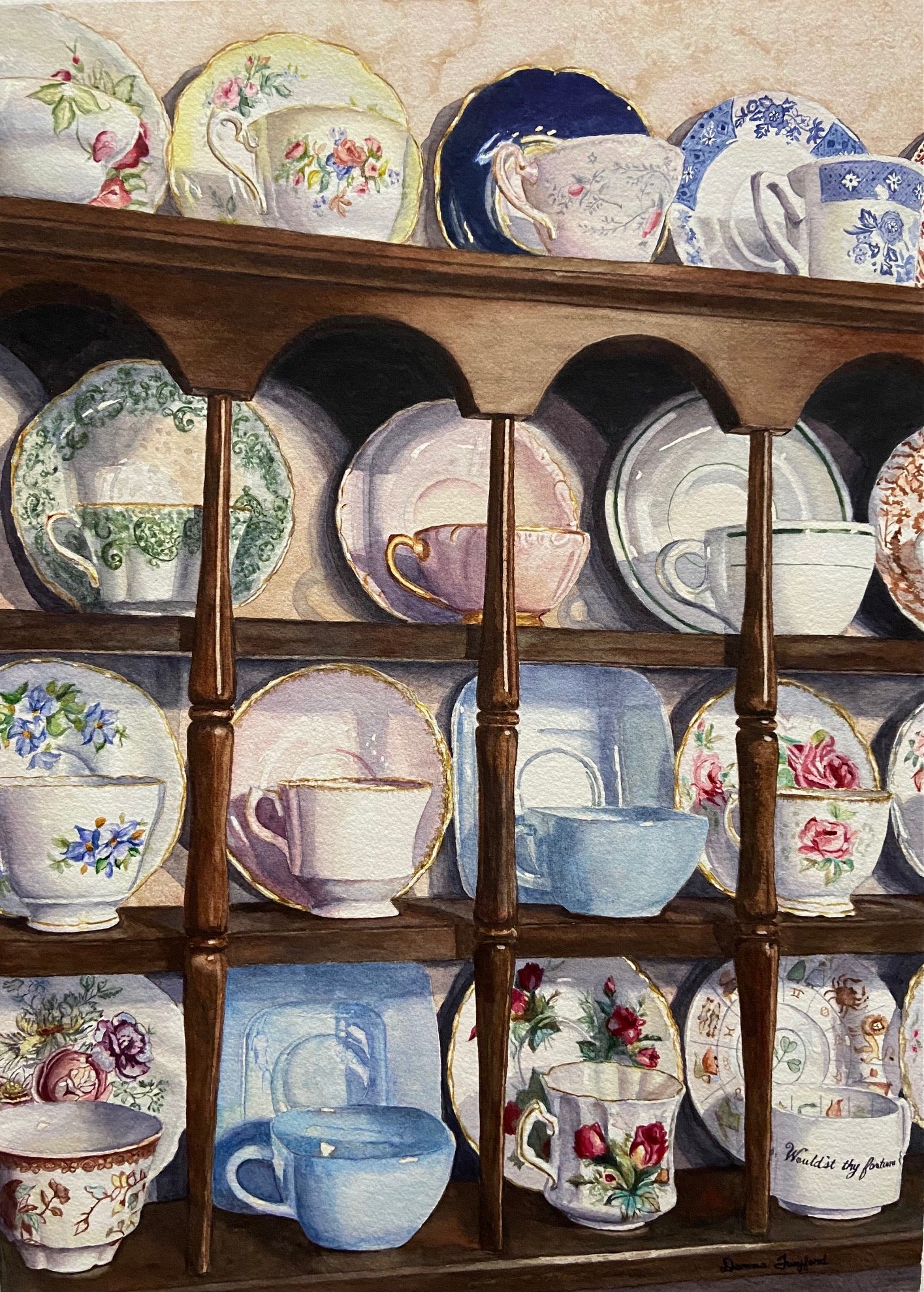
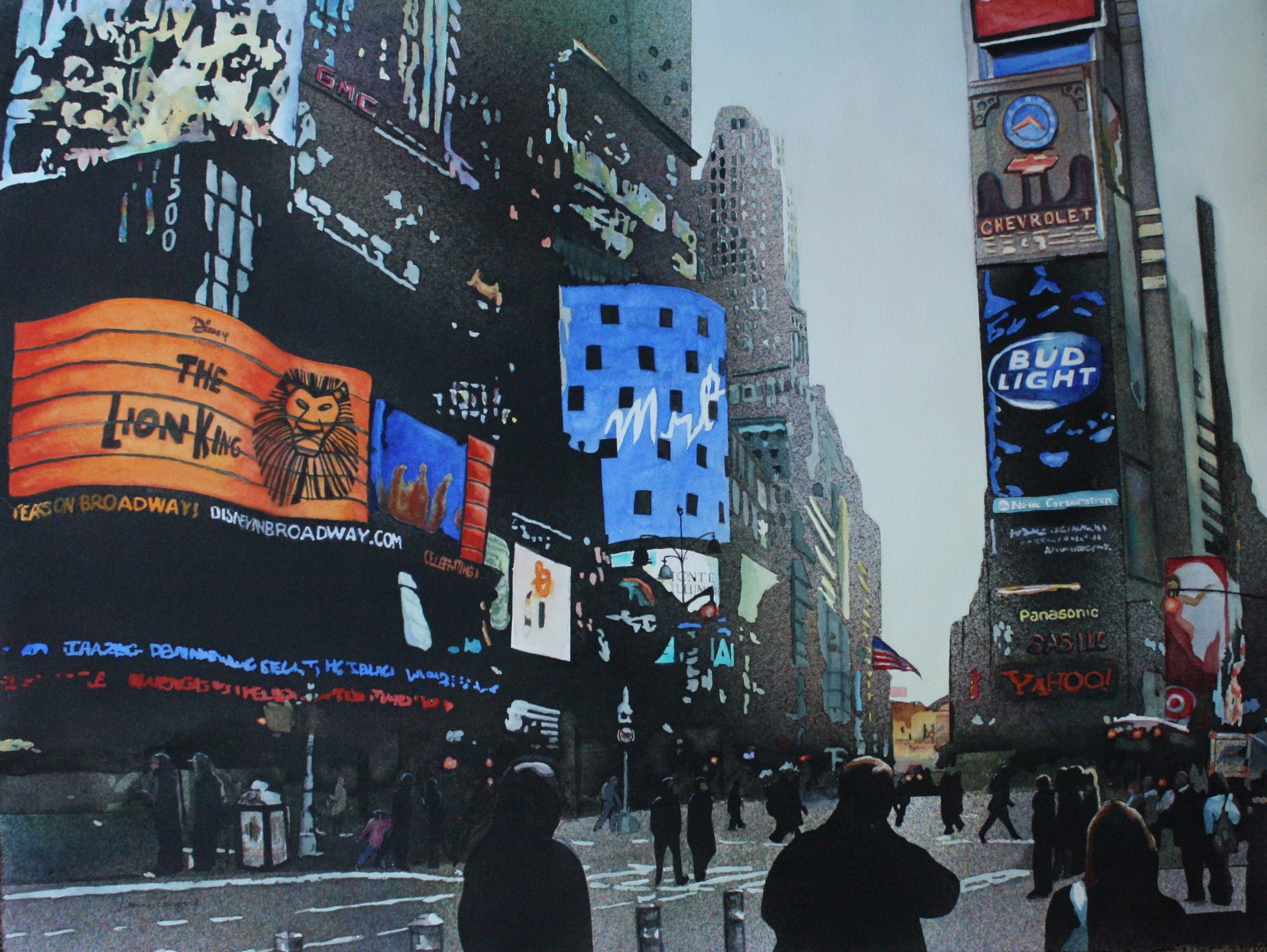
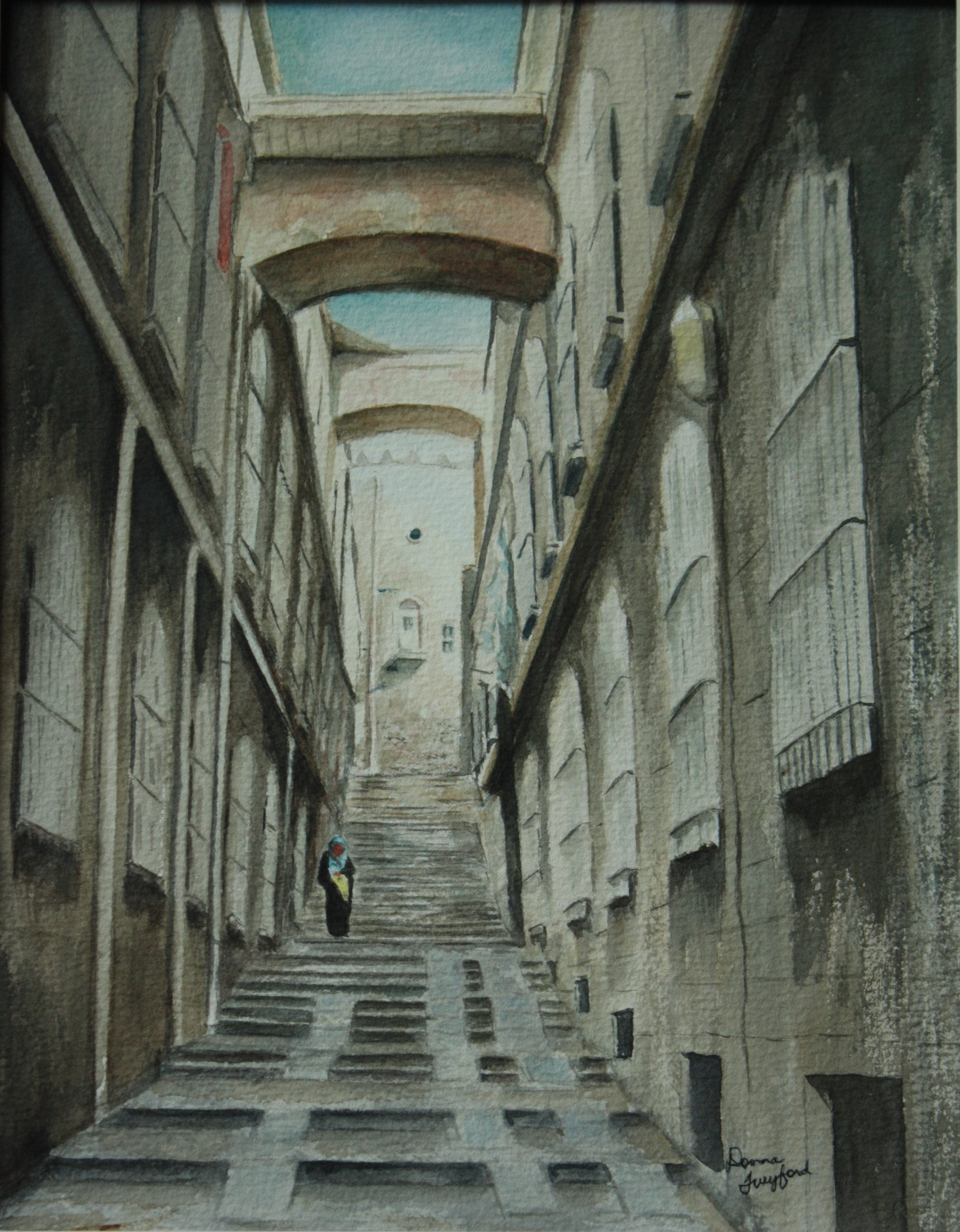
AAS: Donna, were you born and raised in Arkansas?
DT: I was born and raised in Fordyce, Arkansas, married my husband after my sophomore year at Ouachita Baptist University and made plans to move away as soon as I graduated with my degree in Fashion Merchandising. Some 36 years later, during which time we raised a daughter, now residing with her husband and our two grandchildren in Temple, Texas, and a son who resides in Northwest Arkansas, we decided it was time to join the rest of our family in Hot Springs. We’ve lived here now for three years and while I miss the great friends I had in Arkadelphia, we love Hot Springs and all there is to do here.
AAS: Were you taught art as a child?
DT: My early art education is from public school courses and a couple of college level electives. As a child, my maternal grandparents lived a few doors down and were our afternoon “sitters” while my mother worked. My grandmother, Bonnie, surrounded my life with creativity - time around the piano, needlework, cooking, baking and very occasionally painting. She was a self-taught artist and not the most patient (as a grandmother myself now, I get it!) so my time painting with her was rare. Oh, how I would love to have an afternoon to paint with her now!
Finally, after raising our children and having an empty nest, I put learning to paint in watercolor on my bucket list of things to do when I turned 50. A friend instructed me for an afternoon and I was hooked! I have painted almost daily in the eight years since; taking as many workshops as I am able and watching lots of instructional videos. My good friend and advisor, Richard Stephens, told me I needed to paint 1,000 paintings before I could consider myself an artist - I’m getting close. His advice rings in my ears, “Practice, practice, practice!”
AAS: I have said many times that I am not an artist. But the one painting class I took at the then Arts Center Museum school was in watercolor – because I was so naive about how difficult that medium is. What is it about watercolor that excites you?
DT: I was surrounded by the beautiful oil and pastel paintings of my grandmother but I sat most afternoons in her den directly in front of three of her watercolor paintings. I was drawn to the softness and the transparency of the pigments and how the fluid strokes seemed to dance on the paper. I find watercolor wonderfully versatile and feel I’m just beginning to discover what I might be able to create with it. Many of my paintings include watercolor pouring - done without the interference of a brush which provides fluid, luminous layers where the pigments are allowed to mix on their own. Another technique I incorporate is the use of a mouth atomizer which works somewhat like airbrushing; the resulting texture reminds me just a bit of very fine pointillism. Being able to surrender to what is happening on the paper can be challenging and exhilarating at the same time.
AAS: A few weeks ago I went to the 52nd Mid-Southern Watercolorists Exhibition at Layman Library in North Little Rock and saw Tchotchkes. It is a wonderfully charming piece! And really highlights the detailed work you are known for.
Tchotchkes, 20” x 16”, watercolor on paper
DT: My husband and I had lunch at Phil’s Diner here in Hot Springs. They have an immense collection of antique what-nots displayed on virtually every available surface and I was more charmed by the “pretties” than the food! I took several photos and have painted a couple of them. Tea, Anyone? is another painting from their collection. Tchotchkes was a fun piece for me because I love detail - you know that if you’ve had a conversation with me. Realism is a serious turnoff for many artists and critics but for me it’s more about examining every crucial part; of seeing the things that most glance over and ignore. Maybe those things are relevant, maybe not, but they are by nature of their existence part of the story - just like people! This painting was my fifth acceptance into a Mid-Southern Watercolorists Annual Juried Exhibition earning me my Diamond Signature.
AAS: Another marvelously detailed work but more interpretative is Cologne Cathedral, which earned a MSW Gold Award in 2019. Talk about that piece and do you get a lot of inspiration from your travels?
Cologne Cathedral, 30” x 22”, watercolor on paper
DT: We have been blessed to have the opportunity to travel to amazing locations including Israel, Mexico and throughout the US and Europe. I have hundreds of photos in the lineup for painting if only I could find the time! This particular piece is from a photo I took inside the Cathedral in Cologne, Germany. I am mesmerized by stained glass and the stories they tell. The cold stone walls of the cathedral contrasted with the warm sunlight pouring through the glass and casting dappled color onto every surface is so symbolic of the Light of the World. Prior to the deadline for the 49th annual show, I had just completed a workshop through MSW with Laurie Goldstein-Warren. She taught us how to use the atomizer to add texture and depth to our paintings. It is a tedious, technical process and requires much planning and preparation prior to each step. I knew the photo of the cathedral window would look beautiful using this technique. Admittedly, I chose a very ambitious subject and started on a full sheet of watercolor paper. I confess that at least three times I wanted to tear it in half and burn it. I sent a photo to Laurie in the early stages and she encouraged me to push through and keep going. I’m so glad I did!!
AAS: One of my favorite pieces is Open Late. The lighting is wonderfully captured. Is the scene from one of your travels?
DT: I’m so glad you like this piece! The photo reference for this painting is from a late night walk through the old city of Jerusalem in the Muslim quarter. Some of the men were shopping, some putting out stock and some just goofing off. The intense lighting in this scene is definitely what drew me to it as well; however, I don’t think I realized how much produce was there until I started painting! I used both pouring and atomizing in this painting. You can see particularly in the foreground the texture that was created by the atomizer.
Open Late, 22” x 30”, watercolor on paper
AAS: Another one with dramatic lighting is Seen Better Days – also an award winner. Would you talk about that piece? It must have been fun and challenging to paint.
Seen Better Days, 20” x 16”, watercolor on paper
DT: Everyone loves an old barn, don’t they? A friend purchased a farm in West Fork and invited a few girls up for a weekend. On a tour of the property we stopped at this old barn and the sunlight was streaming through the logs and the wind ripped metal roof. I knew the photo would be perfect for pouring! I use the process called notan, which is a Japanese word for light-dark balance. In its purest form it’s simply white against black, but can be used in multiple levels as well. I separated this photo into four values of light and transferred the image to the paper. I applied masking fluid to protect the lightest of the values and then saturated the paper with plain water, front and back. I made a “slurry” of paint by mixing a small amount of paint with water and “pouring” in layers, yellow, then red, then blue; incidentally, the same order that an ink jet printer prints. I lift and move the paper so that the pigments mix together on the paper and pour off the excess. The painting is allowed to dry and the process starts over again with the next level of value. Three pourings yield four levels of value. Peeling off the masking fluid is much like opening a present - and you never really know exactly what’s under there! This painting won the Arkansas Artist award with MSW in 2020 and was also accepted into the Louisiana Watercolor Society’s 51st annual juried exhibition in 2021.
AAS: In By a Nose, you did something completely different with the light. It is such a captivating image. You not only see it but hear it!
By a Nose, 22” x 30”, watercolor on paper
DT: What a tremendous compliment that you hear the thunder of their hooves and the thwack of the whip! When I was still in high school my dad would occasionally check me out of school on Fridays to go to the races with him. He taught me to read the form and to calculate what money I’d win based on the odds - I was skipping math, right? It was our special thing to do together. After we moved to Hot Springs, I was especially excited to live so near Oaklawn Park. But then Covid plagued us and the track was closed to spectators, though racing continued. On Derby Day I took my camera and telephoto lens and shot a couple hundred photos through the fence. I painted a series of six of these, each featuring one spot of color in a strategic place. These photos, like the barn, also begin with the notan process but rather than pouring, these were painted with varying intensities of lamp black.
AAS: Who are some the watercolorists you admire most and why?
DT: Oh, goodness! That will be hard to narrow down! My very first workshop was with the incredible Michael Holter who taught portrait art to us. I still use what he taught us in every portrait I paint. I learned how to use the atomizer and create texture in a workshop with Laurie Goldstein-Warren. She taught us about the importance of using a limited palette and I view her works as among some of the very best out there. Most recently I studied under Kathleen Giles, learning how to deconstruct grays and to give the shadows of our paintings much more depth and color. She paints in a style most similar to what I tend to do by nature, she is just far better at it! And what a hoot - she was so much fun! I’ve participated in online workshops with Graham Berry learning to work exclusively in a limited palette and am amazed at the vibrancy and range of colors one can achieve. Neighbors is I think my most successful painting incorporating his technique. I’m a huge fan of Thomas Schaller and am hopeful I’ll be able to study under him someday. His interpretations of a scene are captivating, his strokes minimal but strong, and his use of light and shadow is drama at its finest. Last, but certainly not least is our own Richard Stephens. I’ve taken classes with him and will NEVER be able to paint as loosely or as freely as he does but watching him work is mesmerizing. I’m a huge fan!
Neighbors, 22” x 30”, watercolor on paper
AAS: You have taught a number of workshops on watercolor techniques. How have those advanced your skills? What do you want to do next with watercolor?
DT: Teaching requires intense preparation so I must be careful to think through my process in detail, making certain that I’m explaining and demonstrating in straightforward ways so that all skill levels can comprehend and follow. I also paint multiple pieces in varying stages so participants can see the process. Practice, practice, practice!! Most recently, in the workshop I taught at Art Group Gallery, the ladies “friended” each other on Facebook. I noticed that one had wished another a happy birthday. That personal connection to other artists is more important to me than the art itself!
I’m still trying to figure out who I am as an artist and what my distinct style is, but in the meantime, I’m enjoying stretching the bounds of what’s possible with this medium. Competitive by nature, I continue entering juried shows. Rejection is no fun and sets me back when I feel I’ve submitted a good work, however, the pressure to present my best keeps me focused and determined to create quality works over quantity. When taking a workshop, typically I take a piece for the presenting artist to view and ask for a critique. I always tell them that I’m late to the game and am too old to have them sugar-coat their criticisms. Tell me what could be done better - be brutal…I can take it!
AAS: You are partner at Art Group Gallery in Little Rock. What is it like being surrounded by such a group of artists who work in different media and styles?
DT: I became a partner in July of 2021 and it’s through that alliance that I have finally begun to see myself as an emerging artist and to have some confidence in my abilities. It’s so inspiring to be surrounded with the level of talent represented at Art Group Gallery. I look forward to my “work” days because the paintings change almost daily. Being able to ask the artist about their process from beginning to end, to see their sources of inspiration, to observe technique, tools of their trade and to glean from them advice on marketing and managing a career in art has proven to be invaluable. It is incredibly gratifying to be surrounded by a team of volunteers who work so hard for each other. We receive messages each afternoon detailing the happenings at the gallery so we are “in the know” as to visitors, sales, etc. When a painting sells, there are cheers of congratulations and support. It’s because of a partner that I’m speaking with you today. What would art be if not for people - those who create, those who critique, those who teach, and those who collect? I’m so grateful for the personal connections I’ve made in these few years - what a blessing it is to do what I love!

